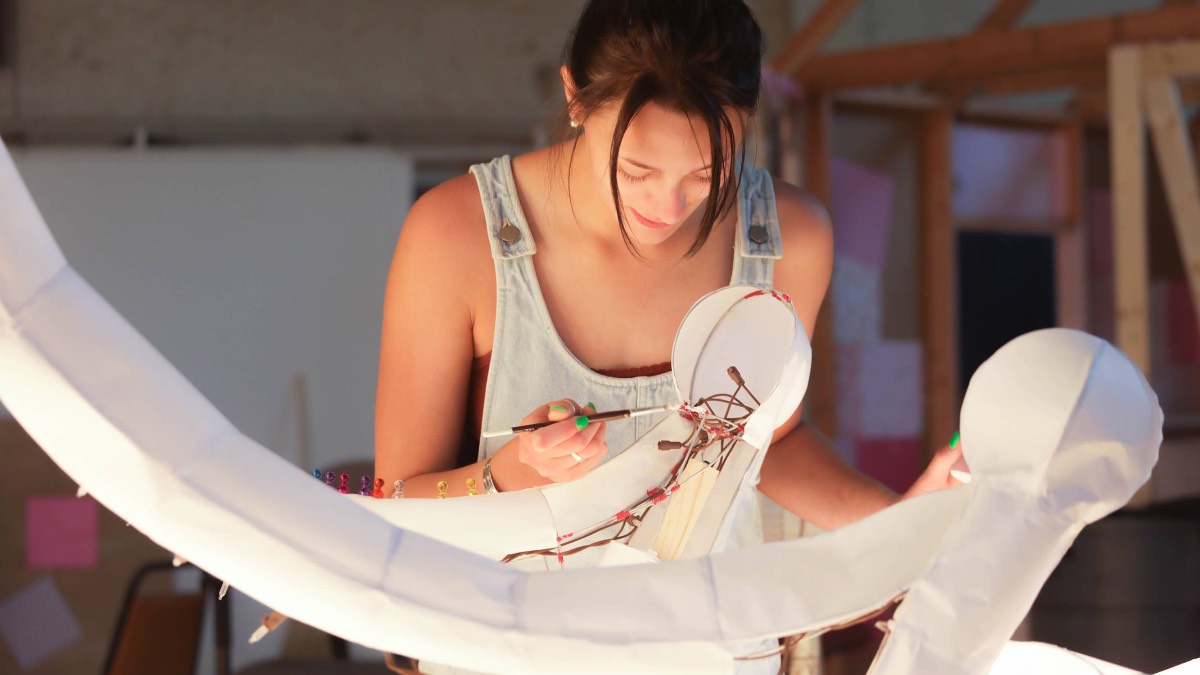The visual and performing arts, and the creative people who fuel them, are thought-provoking, uplifting and more important than ever. The arts deserve to be recognized alongside science, technology, engineering and math as disciplines driving the future. I have been talking and writing about STEM for years.
Now STEAM has replaced STEM.
Design thinking
This has emerged as a systematic approach to applying creativity and innovation to processes, products and social change. It links the creative and performing arts, arts and letters, social sciences, health sciences, science, engineering and other fields. As described in Forbes, the design thinking process involves five critical stages:
- Creating empathy with those for whom you are designing
- Designing the nature of the problem
- Creating alternative solutions
- Prototyping the solution(s) that appear most promising
- Testing the prototypes with the people they are intended to serve
Design thinking requires collaboration, boundary elimination and new ways of integrating disciplines and perspectives that have most often been treated as isolated or separate. WSU has taken a number of steps to encourage this type of thinking, including its Master of Innovation Design, Bachelor of Applied Arts, and its new Bachelor of Applied Science (pending KBOR approval). WSU students designated as University Innovation Fellows are trained in design thinking and then train others.
Increased collaboration
Because of the growing competition in all economic areas that can sustain the Wichita community, art and engineering are finding ways to eliminate boundaries and work together. This is one of the major purposes of GoCreate, the public makerspace in the Experiential Engineering Building at WSU. Artists, craftspeople, hobbyists engineers – anyone with a passion to make, build, assemble, discover and invent – has access to a wonderland of tools and machinery at GoCreate. The magic will flow as they combine skills to develop ideas and objects.
Innovation and creativity
Analytics and analytical approaches can solve many problems, but today’s world increasingly is being driven by innovation and creativity. The essential underlying skills of the arts involve creating new, creating different, innovating both in materials and concepts. The underlying skills of the arts, if pushed to the forefront of education, can enhance dramatically the ability to find new solutions to old and emerging problems.
Integrated communications technologies
These technologies involve sound, composition, performance, design, video, writing / storytelling, animation and emerging new forms of art. Nearly all of the humanities, arts, engineering, computing sciences and social sciences have roles in the evolving communications networks and communications technologies. These communications technologies are the critical underlying media of the Third Industrial Revolution, and because they are distributed in space (involving the entire globe). Wichita can be home to many people who develop careers in these virtual networks. WSU has taken first steps through its new degrees and through its Shocker Studios facility in the old Wichita Mall, on Harry Street between Hillside and Oliver. As these programs evolve, and as faculty in these fields increasingly learn how to work together and break down boundaries, Wichita can become a hotbed of new communications.
Quality of life in the community
Design, performance, image and meaning. In addition to these new roles for the arts, they will continue to play critical traditional roles in creating venues for entertainment, reflection and beauty. What fits with the community and emerging interests of people will change, but as they increasingly engage in design thinking that focuses on the needs of the people we serve, the importance of the arts in attracting and holding creative people in this community will become more important than ever.
The College of Fine Arts at WSU is actively moving to position itself for the future. Each of its areas are re-thinking how it can have impact on the education of the student and the future of the region. The School of Art, Design and Creative Industries; the School of Performing Arts; and most recently, the School of Music; all are rising to the challenge of how they can make a difference in the future of students and the Wichita community.
Over the next several years you can anticipate seeing increasingly exciting initiatives that will clearly place the college in the middle of innovation, creativity and technology that will make a substantial difference in the prospects of this region. Far from an ephemeral, expensive nicety, the fine and performing arts are taking their place as a key component in Wichita’s “community on the rise.” To be sure, the transformation of this college has not always been easy, but this college is emerging as a leader in Wichita’s future.
That’s why we’re moving from STEM to STEAM.
Share your thoughts

 Alyssa Calbert / Strategic Communications
Alyssa Calbert / Strategic Communications